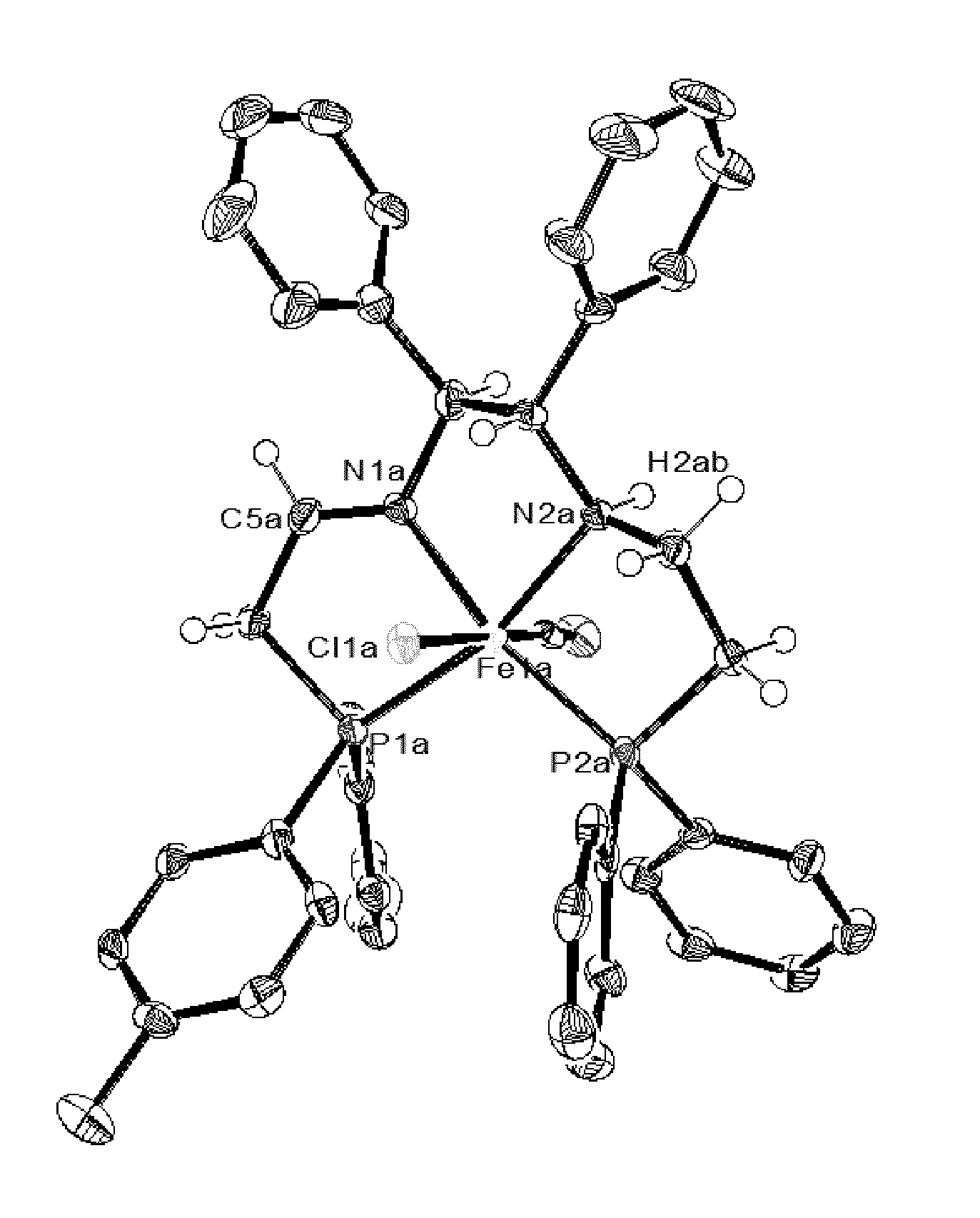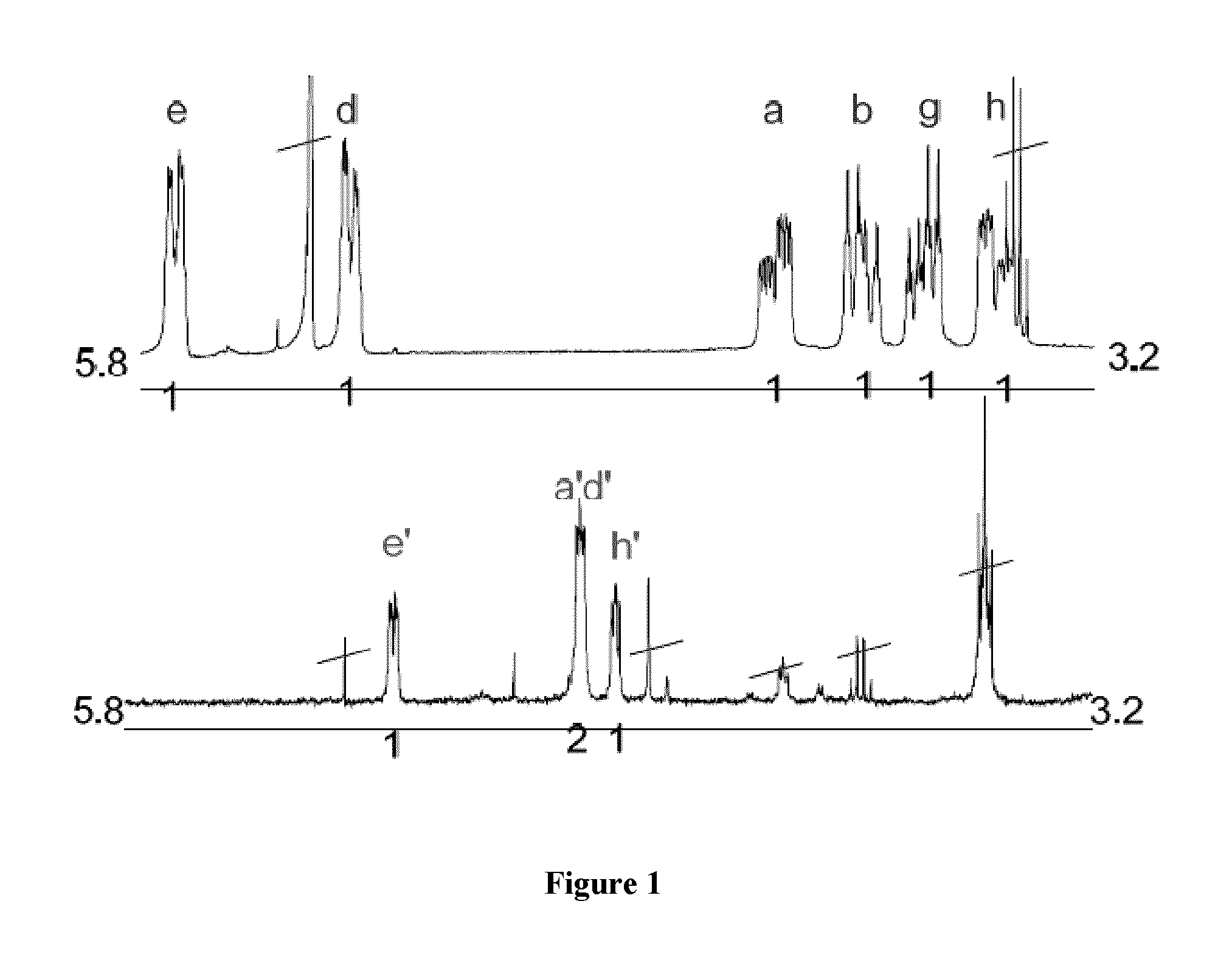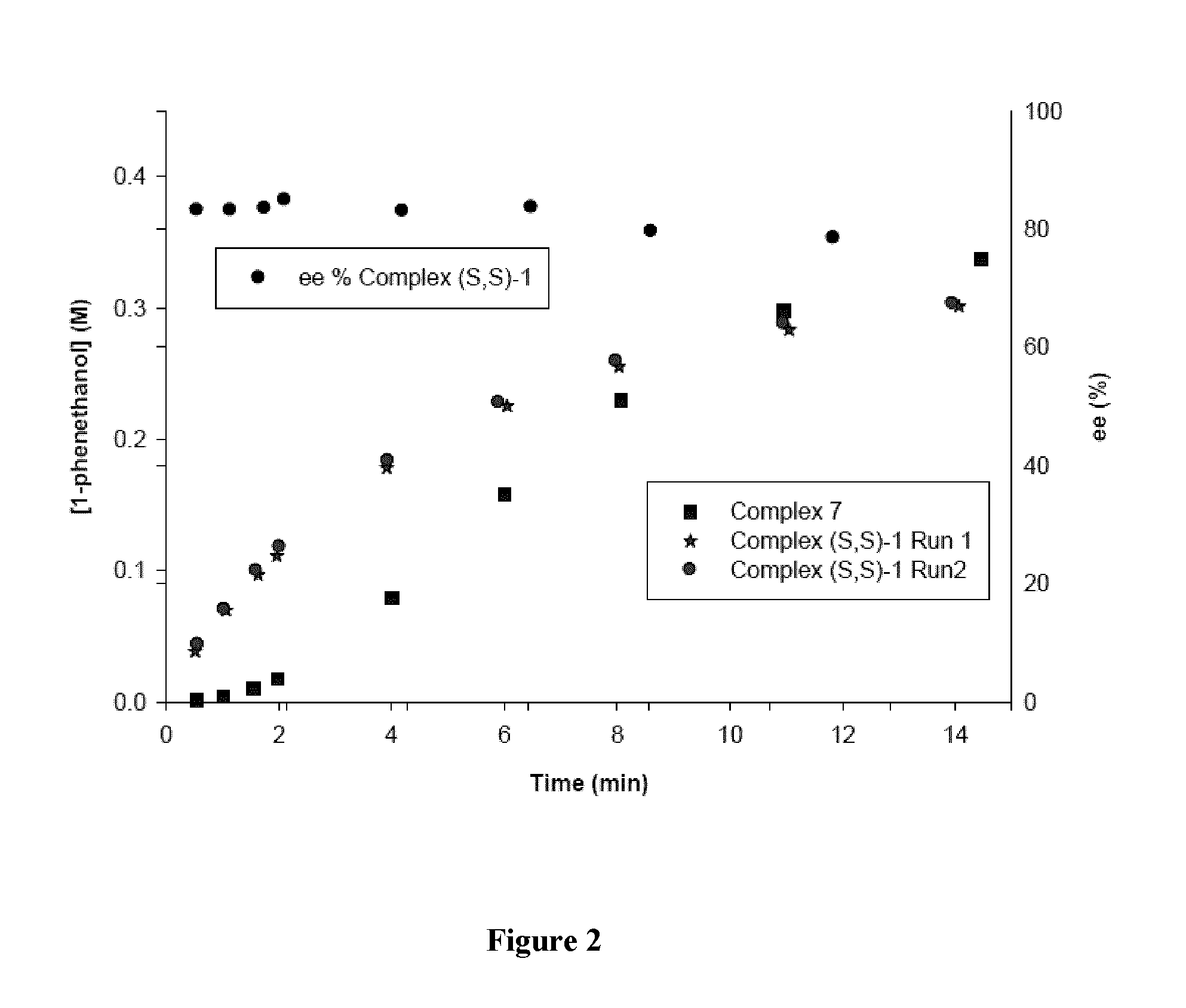Iron catalysts with unsymmetrical pnn'p ligands
a technology of iron catalysts and ligands, applied in the direction of organic compounds/hydrides/coordination complex catalysts, physical/chemical process catalysts, iron organic compounds, etc., can solve the problems of high cost, waste, and high cost of reagents, and achieve the effect of convenient preparation
- Summary
- Abstract
- Description
- Claims
- Application Information
AI Technical Summary
Benefits of technology
Problems solved by technology
Method used
Image
Examples
example 1
Synthesis of Complexes
[0139]General Method
[0140]All manipulations that involved air- or moisture-sensitive materials were performed using Schlenk techniques or a glovebox under an argon or nitrogen atmosphere. Solvents of high purity (ACS grade or higher) were purchased from Caledon Laboratory Chemicals and were further degassed and dried using standard procedures prior to all manipulations and reactions. (Perrin, D. D., Armarego, W. L. F., Perrin, D. R., Purification of Laboratory Chemicals. 2nd ed., Pergamon Press: Oxford, 1980.) Deuterated solvents were purchased from Cambridge Isotope Laboratories, INC and distilled and dried over activated molecular sieves. Acetophenone was distilled under argon and stored under molecular sieves in a glovebox prior to being used in the reduction reactions.
[0141]Other reagents used were purchased from commercial sources and utilized without further purification. NMR spectra of the samples that were prepared under argon in degassed solvents were ...
example 2
Catalytic Reduction of Acetophenone
[0196]General Reaction
[0197]The catalytic reduction of acetophenone to 1-phenylethanol is a standard reaction used to test asymmetric transfer hydrogenation (ATH) catalysts. The optimized conditions for the ATH of acetophenone to produce enantioenriched 1-phenylethanol using iPrOH as a solvent and a reducing agent were previously reported and are summarized in Scheme 23, below. (Mikhailine, A. A., Morris, R. H. Inorg. Chem. 2010, 49, 11039-11044.)
[0198]A. Catalytic Reduction of Acetophenone using Complexes (S,S)-7 and (S,S)-1
[0199]The stock solutions were prepared in a glovebox. The stock solution 1 (SS1) was prepared by dissolving the catalyst in acetophenone. The stock solution 2 (SS2) was prepared by dissolving KOtBu in i-PrOH. Prepared solutions were used only after all solids were completely dissolved and for less than two days. A required mass of the SS1 was added to a vial containing i-PrOH charged with a stirring bar and acetophenone to for...
example 3
Asymmetric Transfer Hydrogenation of Ketimines
[0221]Complex (S,S)-1 can catalyze the ketones and imines in the same fashion reported for complex (S,S)-7. Indeed the complexes as presently described can be used in transfer hydrogenation of ketimines to secondary amines with good enantioselectivity according to the following scheme:
PUM
| Property | Measurement | Unit |
|---|---|---|
| pKa | aaaaa | aaaaa |
| pressure | aaaaa | aaaaa |
| temperature | aaaaa | aaaaa |
Abstract
Description
Claims
Application Information
 Login to View More
Login to View More - R&D
- Intellectual Property
- Life Sciences
- Materials
- Tech Scout
- Unparalleled Data Quality
- Higher Quality Content
- 60% Fewer Hallucinations
Browse by: Latest US Patents, China's latest patents, Technical Efficacy Thesaurus, Application Domain, Technology Topic, Popular Technical Reports.
© 2025 PatSnap. All rights reserved.Legal|Privacy policy|Modern Slavery Act Transparency Statement|Sitemap|About US| Contact US: help@patsnap.com



